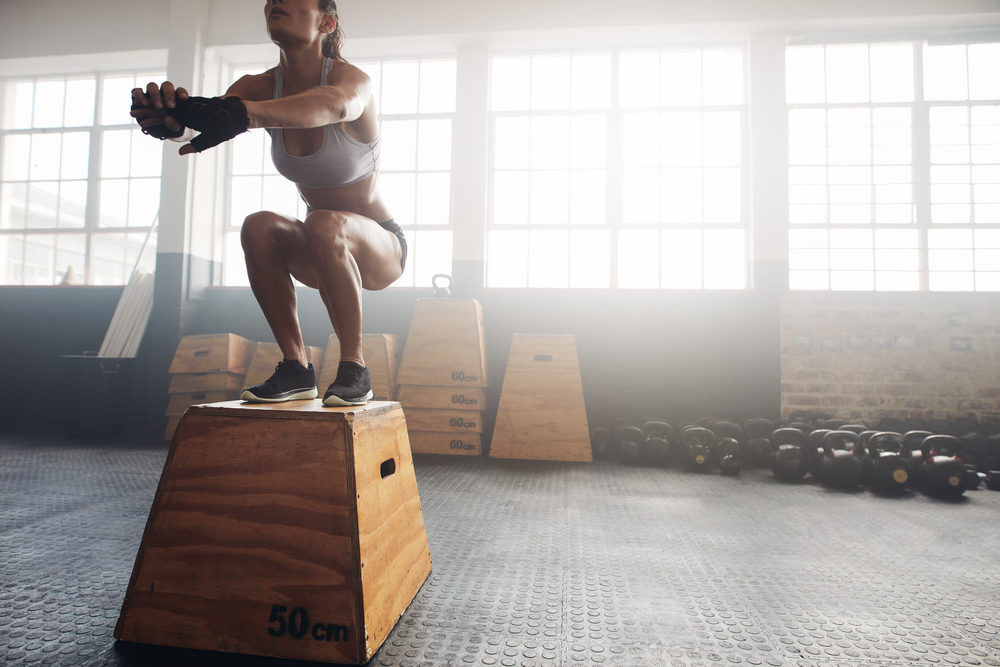Learn about the common injuries associated with HIIT, and how you can stay safe while following this popular exercise program.
If you’re a Barry’s Bootcamp devotee, you already know about high intensity interval training (HIIT). This popular form of exercise has been gaining more and more followers in the past few years and provides many health benefits, such as rapid calorie burning and boosting your metabolism throughout the day. However, the short bursts of activity also carry an increased risk of injury, especially for beginners.
If you’re thinking about trying HIIT, it’s important to build up your strength and flexibility beforehand, as well as take time to recover between workouts. If you overexert your body or train too often, you put yourself at risk for developing one of these common conditions. Here’s our guide for how to approach HIIT safely, and make sure your training isn’t cut short by a painful injury.
MENISCUS TEAR
HIIT often involves a lot of running and jumping, which can put pressure on the knees. One of the most common injuries associated with this type of training is a meniscus tear, which is when the cartilage in the knee joint becomes frayed or ruptured. The damage is often caused by a forced twist of the leg, especially when the foot is planted.
To avoid injuring your meniscus, it’s important to stretch properly both before and after your HIIT workout. You may benefit from dynamic stretching to warm up and static stretching to cool down. Plus, be sure to wear the right athletic footwear that supports your legs as you run and jump.
ACHILLES TENDONITIS
The achilles tendon, which connects the calf muscles to the ankle, bears the brunt of your body’s weight during jumping exercises. It can become damaged or inflamed due to overuse, resulting in painful tendonitis. This can lead to swelling, stiffness, and difficulty bending your foot.
If you’re considering trying HIIT, first build up strength in your legs with resistance bands or calf raises. Before each workout, make sure to adequately stretch your calves, feet, and knees. HIIT training often encourages you to push yourself, but avoid too many repetitions that place excessive pressure on your joints. It’s also important to take time to rest and heal in between workouts so that your ankle doesn’t suffer from overuse.
SLAP TEAR
Many HIIT programs incorporate strenuous weight lifting, which can damage the shoulder joint if you’re not prepared. Frequently rotating your arms may also injure the labrum, the rim of cartilage that lines the shoulder socket. Overuse or jumping into an unfamiliar exercise can cause this cartilage to become frayed or ruptured, resulting in a SLAP tear.
To protect your shoulder labrum, it’s important to learn the right form when lifting weights. Make sure to keep your back straight and use your legs as a source of power. If you’re not sure about the proper technique, ask your trainer. When lifting, don’t push yourself beyond your limits or attempt to do too many repetitions.
ROTATOR CUFF TEAR
The rotator cuff is a collection of tendons that connect the upper arm bone to the shoulder socket. These tendons help give the arm its wide range of motion. Like the shoulder labrum, weightlifting may put the rotator cuff at risk of injury. Overhead motions in particular can lead to tears or ruptures in this area.
It’s important for beginners to work on strengthening their shoulder muscles before beginning high-intensity weight training. Try lighter weights with fewer repetitions first, while also increasing your shoulder mobility with pectoral stretches. If any of your HIIT exercises are too difficult or strenuous, modify them to something more manageable.
HIP LABRAL TEAR
A hip labral tear occurs when the acetabular labrum, the cartilage lining the hip socket, becomes frayed or ruptured. This common sports injury is often the result of overtraining or sudden twisting motions. The frequent running and jumping of HIIT programs can push your hip past its normal range of motion, leading to tears in the labrum.
To prevent a hip injury, try strengthening the surrounding muscles with side-leg raises, donkey kicks, or squats. In addition, you can try yoga exercises to stretch and increase flexibility in your lower body. It’s also important to take time to rest after strenuous workouts so that your hips can recover.
SEEKING TREATMENT FOR A HIIT INJURY
If you do suffer an injury during HIIT, it’s important to stop your program immediately and set up an appointment with an orthopedic specialist. At New York Bone & Joint Specialists, our doctors and physical therapists can help diagnose your condition and determine the best treatment plan for you. Before long, we’ll have you on the road to recovery so you can get back to the activities you love.




